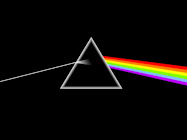One of the most interesting things to me is how a moon becomes a moon, and orbits its parent planet. Wouldn't you think if its just space debris caught into orbit wouldn't it just crash into the planet like a meteor? How does a moon maintain orbit speed? For that matter, why don't the planets crash into the sun? It is some pretty complicated rocket science to get a man made satellite into orbit around a planet. Gravity assist fly-bys, rocket adjustments, and thrusters all fire at a given time. Just boggles my mind.
One thing that was never really covered in school is 'where' does gravity originate? Even asteroids have gravity. Everything in space generates gravity, including space ships and man made satellites. At least that's the info I have come across in my reading. For example:
in theory-
if an asteroid or other Near Earth Object (NEO) is on trajectory to impact the Earth, a solution could be to send a space craft to travel along a near same trajectory, using that crafts gravitation to pull the NEO off present trajectory and miss the Earth. At the proper distance the path would only need a few degrees of change to prevent a collision.
I also find it interesting that a Near Earth Object is called Neo... blink blink.







No comments:
Post a Comment